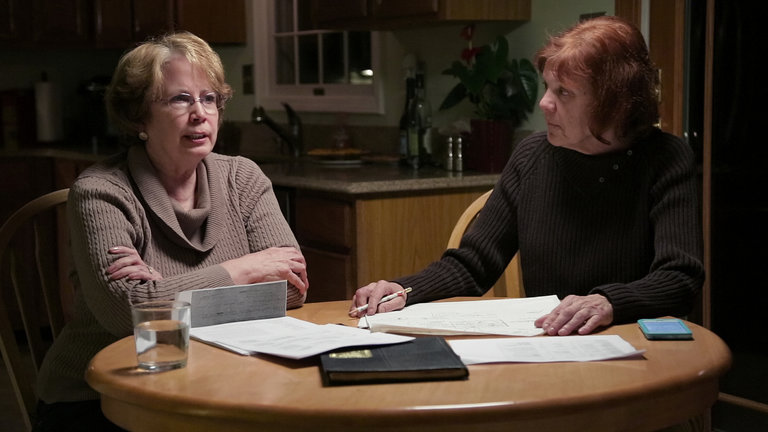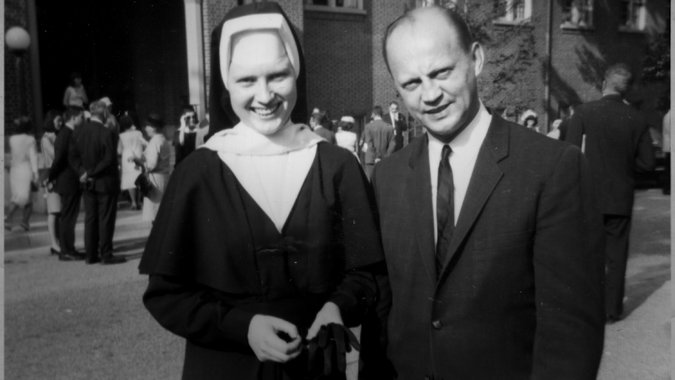‘the Keepers’ on Netflix: True Crime, and Lots of It
By Mike Hale
What quality does a true-crime story need most to become a national conversation piece? Lurid details (“The Jinx”)? A complicated mystery (“Making a Murderer”)? A social-justice angle (“Serial”)? “The Keepers,” a seven-part Netflix documentary series (available on Friday) bidding to be the next true-crime must-watch, has all of those in abundance. It incorporates a half-century-old unsolved murder case, shocking details of sexual abuse and devastating indictments of the indifference and obstructionism of the Roman Catholic Church as well as of the Baltimore and Maryland criminal justice systems. All of these make “The Keepers,” directed by Ryan White (“The Case Against 8”), an often fascinating and devastating experience. If it’s not quite as addictive, across seven hours, as the best of its competition, it’s not for lack of effort or craft. But yoking together the disparate elements of the story Mr. White is trying to tell would have been a tall order for anyone.
The show’s primary hook is its cold case, the murder of Sister Catherine Cesnik, a young Baltimore nun and schoolteacher who disappeared in November 1969 and whose body was found two months later, dumped in a field. No one was ever charged in her death. Mr. White starts with that story and immediately introduces two memorable and appealing figures: Gemma Hoskins and Abbie Schaub, former students of Sister Cesknik’s who have devoted themselves in recent years to investigating her case. But there’s more. In the series’s second episode, we meet Jean Hargadon Wehner, who figures significantly in the Cesnik case but has her own, separate story to tell, about horrific abuse at the hands of a male faculty member at the same school where Sister Cesnik taught. From this point on, Mr. White is caught in a tricky balancing act, moving back and forth between two narratives that sometimes intersect and sometimes move along different tracks. Ms. Hargadon Wehner’s story, which involves trying to obtain justice based on recovered memories, has the outlines of a classic tragedy, and Ms. Hargadon Wehner is a steely heroine. The Cesnik story, in contrast, is a noirish whodunit, and Ms. Hoskins and Ms. Schaub, despite the grimness of the material, are doughty, humorous presences. Each thread is compelling in its own right, and a convincing case is made for their connections. But the shifts back and forth between the abuse story, a well-documented tale of institutional malfeasance, and the murder story — full of circumstantial and conflicting theories — can be jarring. Mr. White employs the full true-crime arsenal, including black-and-white re-creations of events and a lot of b-roll of bleak Baltimore backdrops, to achieve a consistently artful atmosphere of foreboding, but “The Keepers” doesn’t quite add up to the unified argument he’s trying for. Mr. White and his crew also employ a certain amount of narrative trickery, both to tie together the story strands and to stretch the drama across the episodes, strategically withholding and reordering information. It raises a question that could be asked of all these shows: Since their stories could all be told in shorter and more straightforward ways without losing any significant facts, what’s gained by turning them into multipart sagas? Entertainment value, obviously. But also, in the cases of “The Jinx,” “Making of a Murderer” and “Serial,” the attention that the programs brought to the cases had real-world consequences: an arrest, an appeal, a new trial. “The Keepers” has helped bring about action as well, but it’s been in keeping with the circular, frustrating nature of the story it tells. In an amazing bit of timing, the results of a DNA test on the exhumed body of a priest who was a suspect in the Cesnik case were reported two days before the show’s premiere. He was not a match for evidence from the scene where her body was found. In the end, “The Keepers” is as much a character study as it is a crime documentary, if not more so. Lawsuits and investigations may not be resolved to our satisfaction, but we can be heartened by the perseverance of victims and their supporters. Not too heartened, though — one of the last images we see is Ms. Hargadon Wehner responding to further stonewalling from church authorities by unhappily pouring herself a very generous glass of red wine.
|
.
Any original material on these pages is copyright © BishopAccountability.org 2004. Reproduce freely with attribution.

